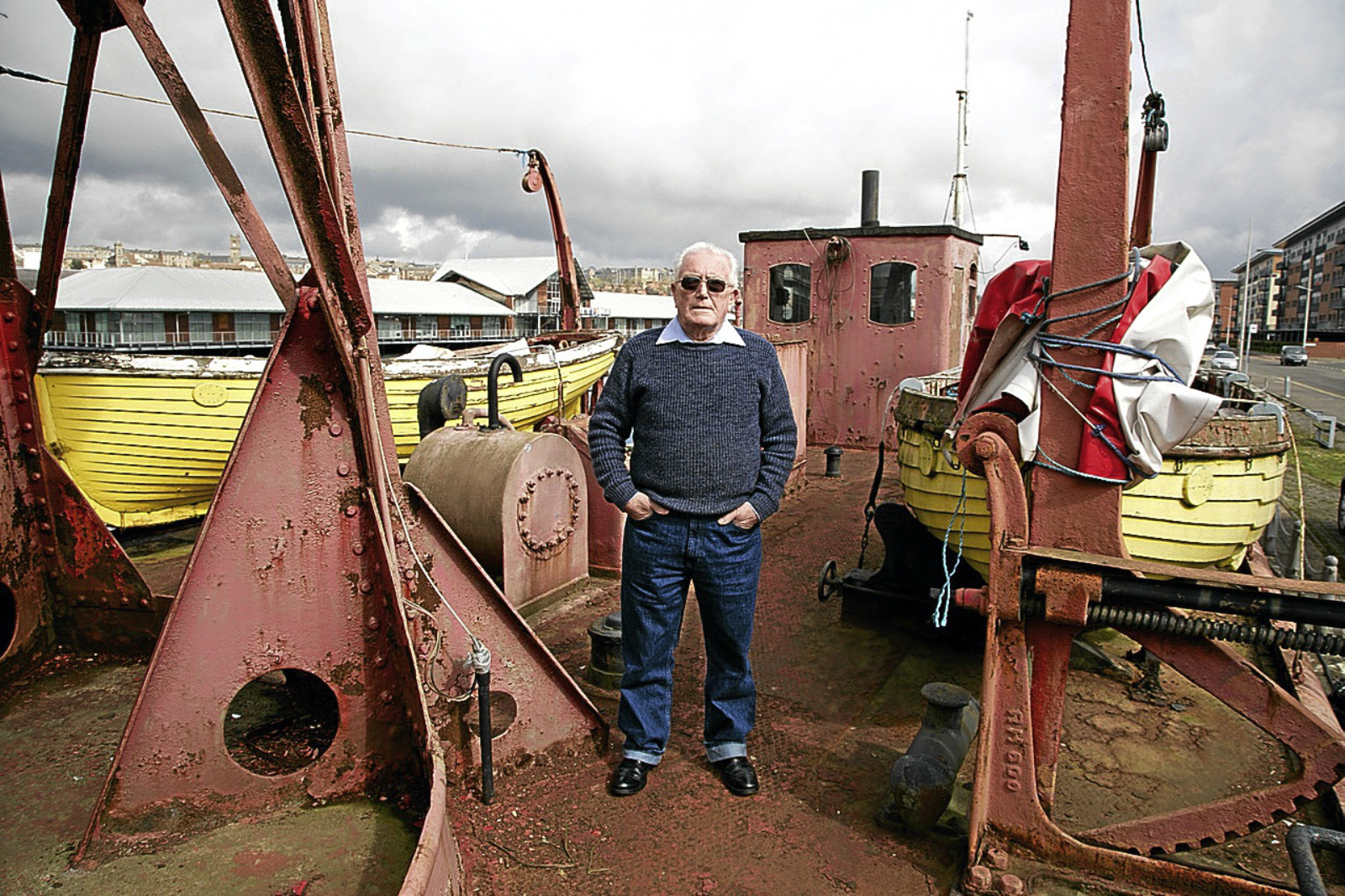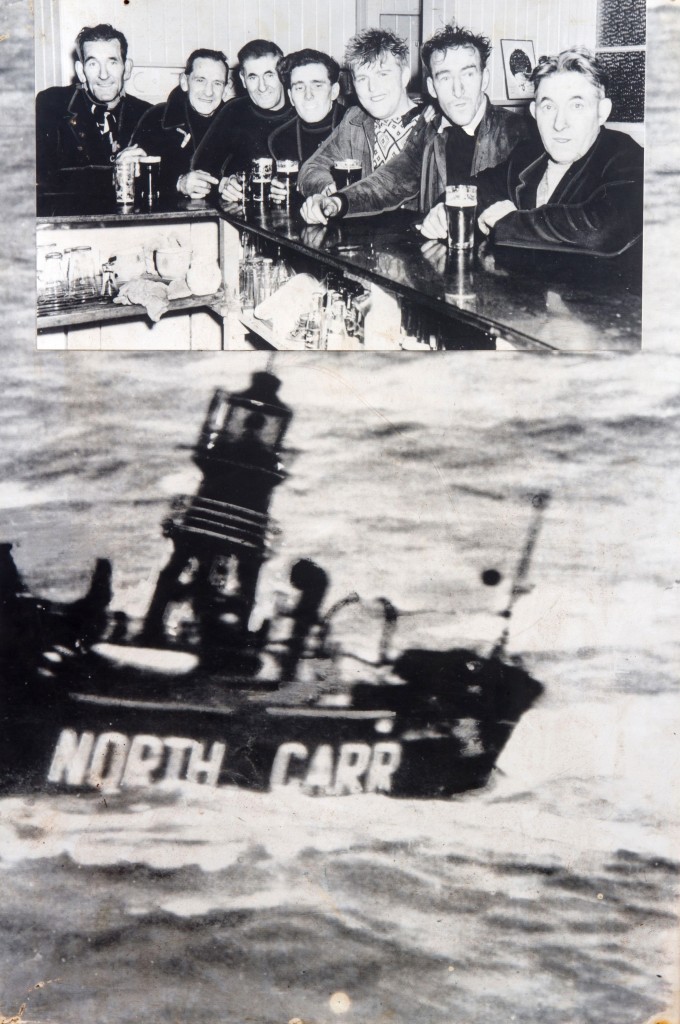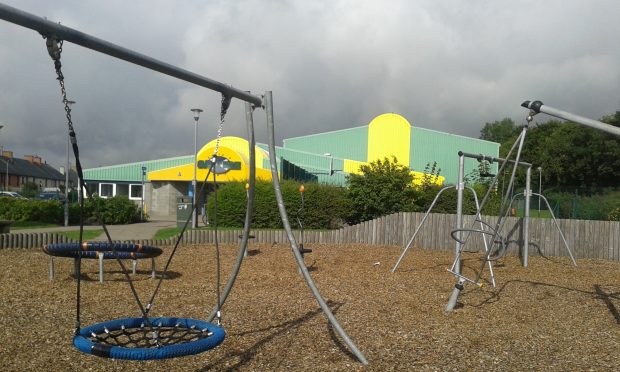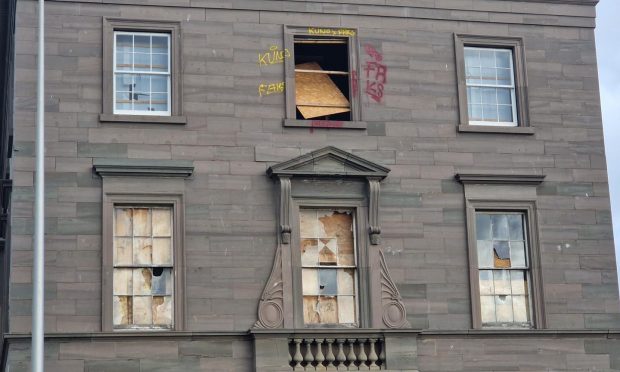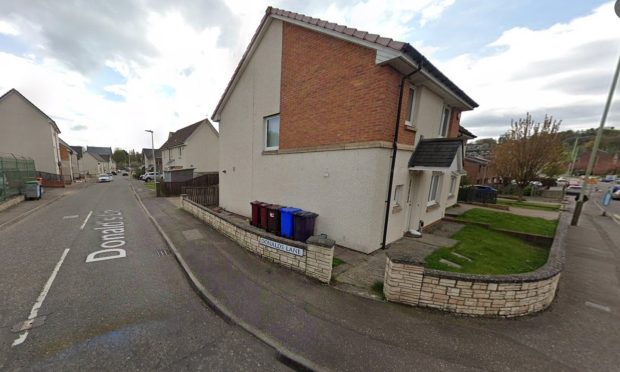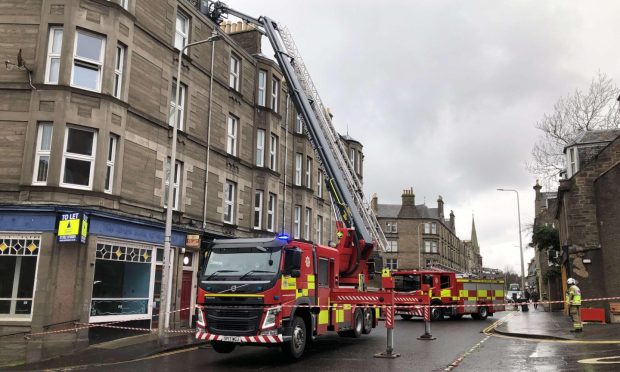It was amidst the most tumultuous seas ever witnessed by fishermen on the East Neuk of Fife that Ken Millar and his fellow seamen scanned the dark for sight of the Mona.
Their vessel, the North Carr Lightship, had broken its mooring and was drifting towards the very rocks it was stationed to protect others from shattering upon.
Amidst 40 foot waves, they hastily flung out a second anchor, encumbered with chain in the hope of sticking fast to the deeps, as they awaited help.
Unbeknownst to them, until break of day and a rescue by helicopter, the Broughty Ferry lifeboat and her eight-strong crew had already been lost.
Mr Millar told the Courier: “It was like plunging up and down a hillside – one moment looking at God Almighty and the next staring at Davy Jones Locker”.
“She was a good-sea boat, taking everything that came her way, but she took an awful pounding that night.
“I was on the radio at 4.43am and the last I heard was that the Mona had cleared the Tay bar. We were all sent up on deck to look for its lights but we couldn’t see anything.
“It wasn’t until daylight broke that we found out that she had run aground, or turned-turtle, with the crew lost.”
“We were eventually airlifted-off to Crail, but it was a traumatic time for everyone and something that lives with you.
“I still travel to Broughty Ferry every year on December 8 to lay a wreath in the memory of the lifeboat crew.”
Mr Millar began life on board the North Carr Lightship at the age of 18, stationed two miles off the Scottish coast to protect vessels of all sizes from the treacherous North Carr reef.
At the time, the waters were busy with trawlers and factory ships – including large parts of the Polish fishing fleet.
He said: “I really enjoyed my time aboard, working with a great group.
“There were seven men on board at a time – the kipper, an acting mate, two engine-men who were responsible for the engines and the foghorn and two deckhands.
“I was a deckhand and had to take turns being cook. I’m good in the kitchen now, but then, well, it was something I had to learn very quickly.
“Your life revolved around cleaning and painting, making sure that the brass-work and lamp were gleaming.
During his three years, Mr Millar witnessed many small accidents and tragedies on his dangerous part of the North Sea, saying: “On one watch we thought we could see a light in the darkness, but it could have been a car on the mainland.
“The next day we found it had been a small boat in trouble with no flares. They began lighting newspapers to catch someone’s attention. They were lost.”
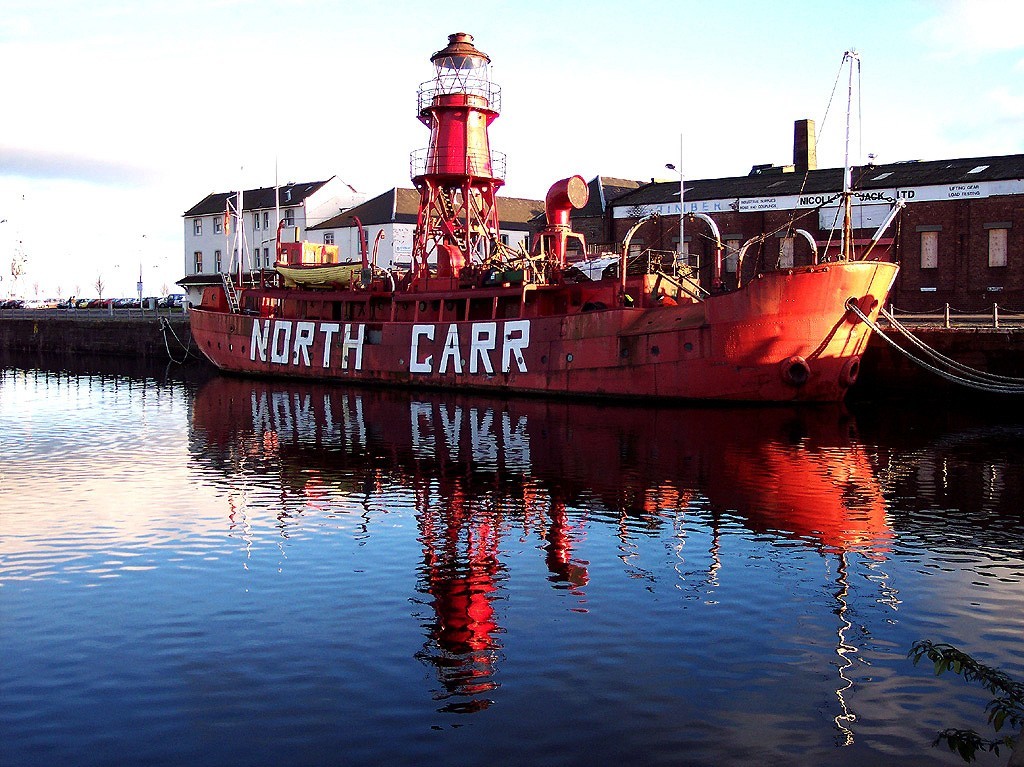
£1 million campaign to restore ship to prime
It will take as much as £1 million to return the North Carr to its former glory, but a major fundraising campaign will soon be under way.
Maritime training charity Taymara hopes to submit an application for initial lottery funding within weeks to support a feasibility study.
If successful, there are hopes that the restoration could be completed in time for the 60th anniversary of the loss of the Mona, in December 2019.
The restoration will have to be extensive as time, tide and even preservation efforts have all taken their toll on the vessel.
First to go was its life-saving lantern, stripped when it retired to port in Anstruther to protect its expensive brass fittings from thieves.
Age and general wear and tear have since led to deterioration and corrosion that now cannot be covered by patch-up work.
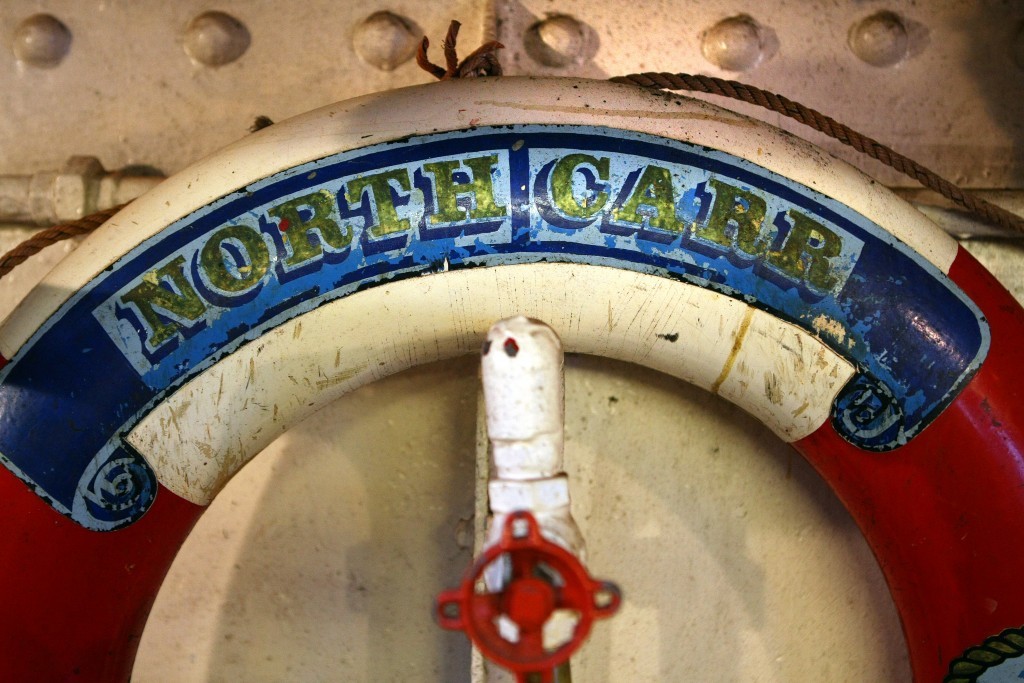
Mr Millar aims to help Taymara’s fundraising effort in any way he can in the months and years to come.
He said: “I would be very happy to see the North Carr restored. Age is an awful thing and it has done terrible things to the vessel. Sadly she is now looking a little neglected.
“When it came out of service it initially went to Anstruther as a museum piece and they took the lantern out.
“It was an expensive item and came with a lot of valuable brass fixtures and fittings and I believe it is now in one of the Edinburgh museums.
“I would like to see it replaced with a replica so that people could see what the lightship was really like.”
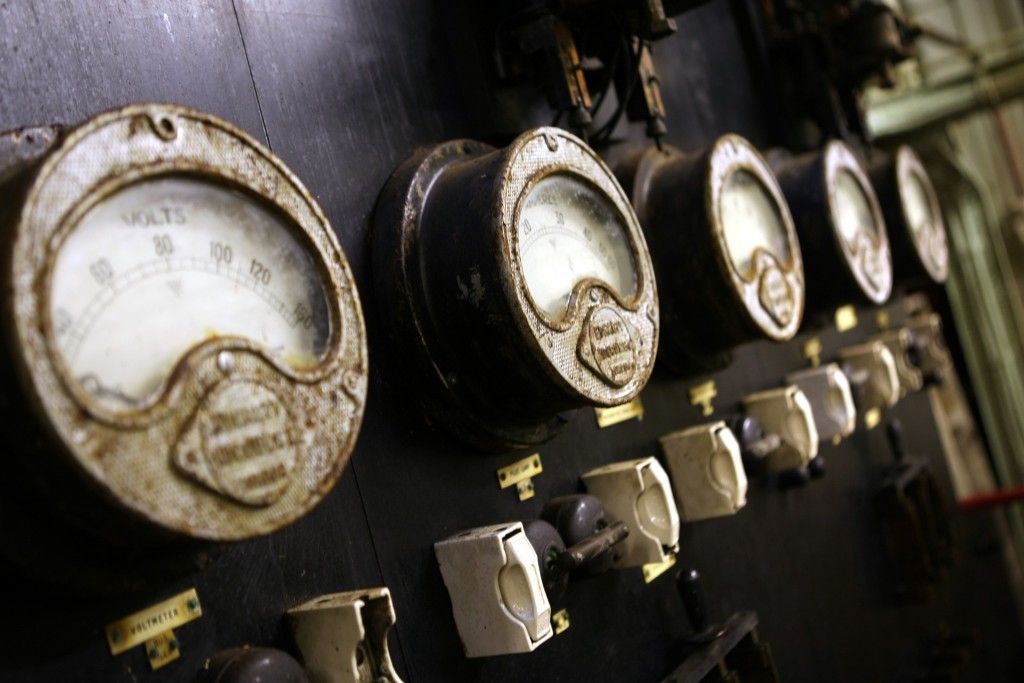
The charity hopes that the refurbished lightship, launched in 1933, will become one of the jewels of the Waterfront.
The vessel is of historic significance, as one of only two Scottish lightships ever in service, and also of a construction technique – riveting – which gave way to welding.
And for all that the lantern is missing, it remains something of a floating museum, crammed with many of the artefacts that were within when she was first introduced into service.
For many, however, the North Carr’s continued importance comes from the fact that it is effectively a memorial to the Mona and her crew, who gave their lives in a forlorn rescue attempt.
